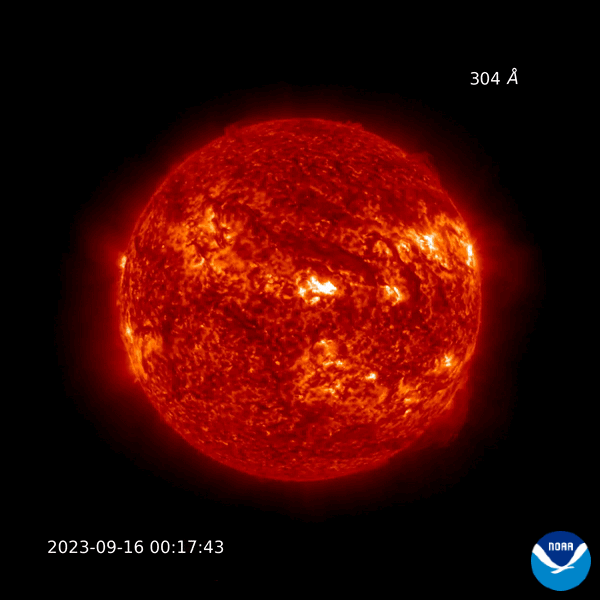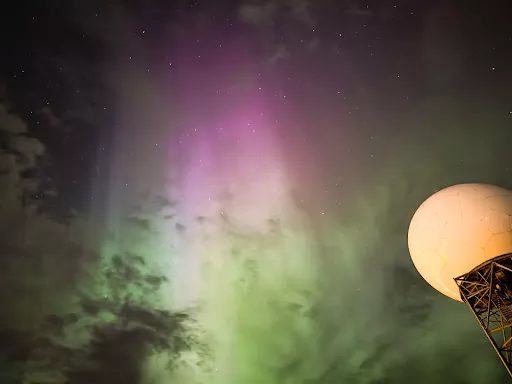
On September 16, 2023, the Solar Ultraviolet Imager (SUVI) instrument onboard GOES-East observed a large solar filament rippling off the face of the sun. Near the middle of this 24-hour imagery, there is a dark "flash." This was the satellite passing into the Earth's shadow. For the GOES satellites, there are two eclipse seasons; one in the fall (Aug/Sept) and one in the spring (March/April).
Filaments are cooler regions that can erupt and become a key source of space weather when the sun is active. These can sometimes produce coronal mass ejections (CMEs), hurtling huge tangled clouds of plasma and magnetic fields out into the solar system. The Space Weather Prediction Center uses satellite data to produce space weather forecasts to predict the impact solar storms can have on Earth. This particular event caused aurora borealis in the Northern Hemisphere.

The GOES-East geostationary satellite's high-resolution imagery provides optimal viewing of severe weather events. However, it doesn’t just view Earth. The satellite also carries a suite of instruments, such as SUVI and EXIS, that monitor the sun and detect approaching space weather hazards. SUVI is a telescope that takes images of the full sun in six extreme ultraviolet channels around the clock. Various elements in the atmosphere of the sun release light at specific wavelengths depending on their temperature, so by observing in several different wavelengths, it can give us a more complete picture of the sun’s upper atmospheric and underlying structure.
